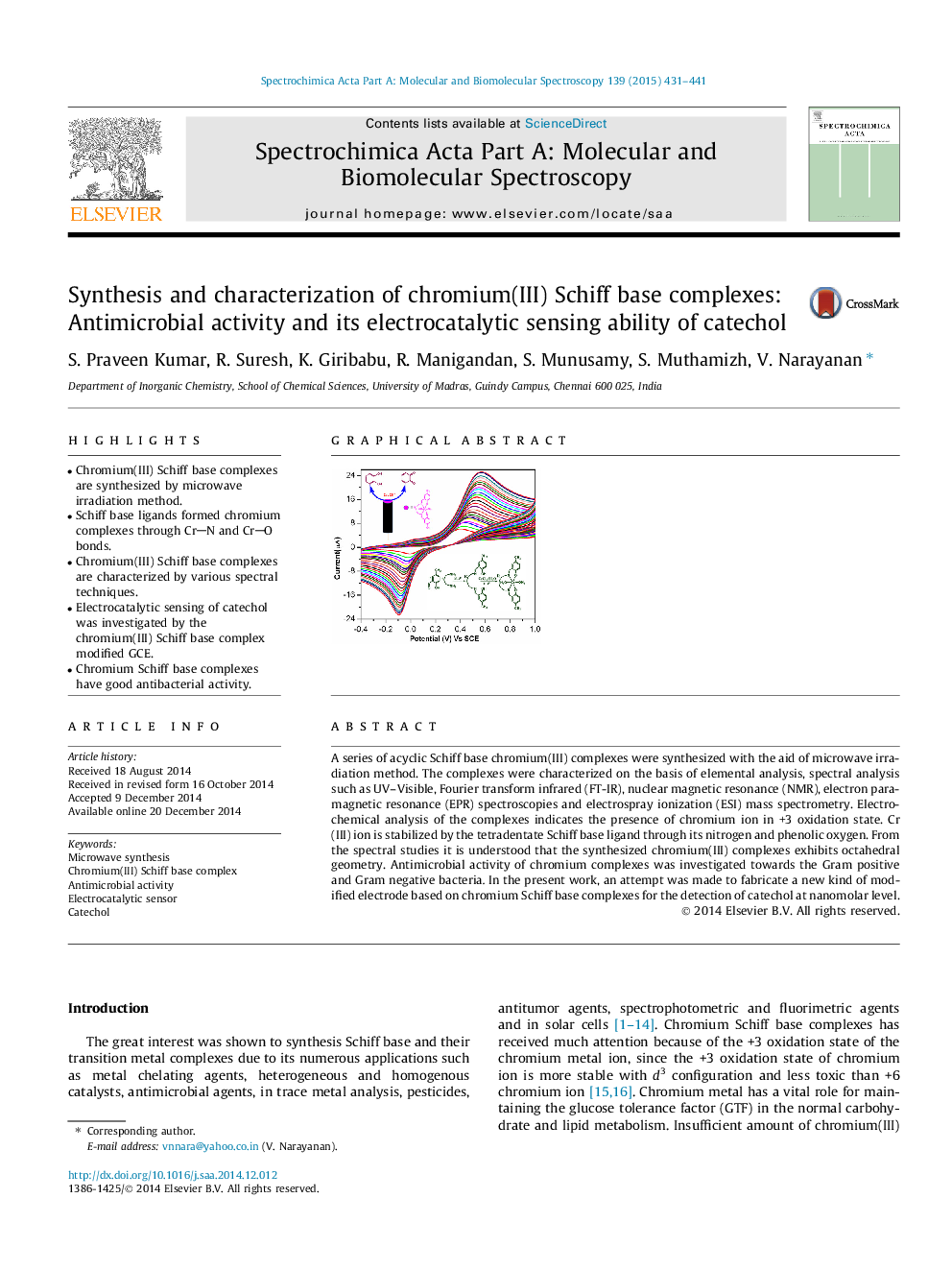| Article ID | Journal | Published Year | Pages | File Type |
|---|---|---|---|---|
| 1232729 | Spectrochimica Acta Part A: Molecular and Biomolecular Spectroscopy | 2015 | 11 Pages |
•Chromium(III) Schiff base complexes are synthesized by microwave irradiation method.•Schiff base ligands formed chromium complexes through CrN and CrO bonds.•Chromium(III) Schiff base complexes are characterized by various spectral techniques.•Electrocatalytic sensing of catechol was investigated by the chromium(III) Schiff base complex modified GCE.•Chromium Schiff base complexes have good antibacterial activity.
A series of acyclic Schiff base chromium(III) complexes were synthesized with the aid of microwave irradiation method. The complexes were characterized on the basis of elemental analysis, spectral analysis such as UV–Visible, Fourier transform infrared (FT-IR), nuclear magnetic resonance (NMR), electron paramagnetic resonance (EPR) spectroscopies and electrospray ionization (ESI) mass spectrometry. Electrochemical analysis of the complexes indicates the presence of chromium ion in +3 oxidation state. Cr (III) ion is stabilized by the tetradentate Schiff base ligand through its nitrogen and phenolic oxygen. From the spectral studies it is understood that the synthesized chromium(III) complexes exhibits octahedral geometry. Antimicrobial activity of chromium complexes was investigated towards the Gram positive and Gram negative bacteria. In the present work, an attempt was made to fabricate a new kind of modified electrode based on chromium Schiff base complexes for the detection of catechol at nanomolar level.
Graphical abstractFigure optionsDownload full-size imageDownload as PowerPoint slide
